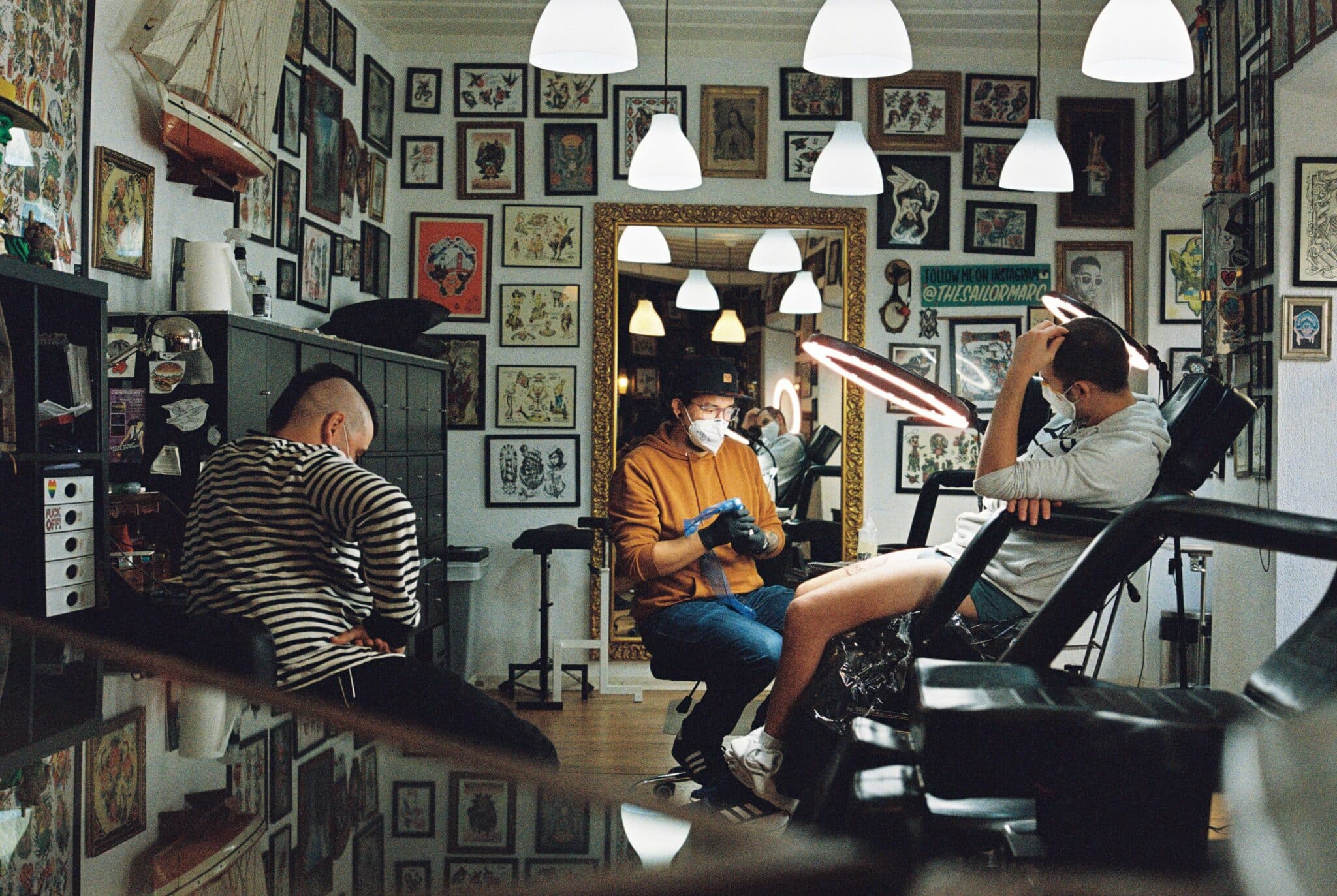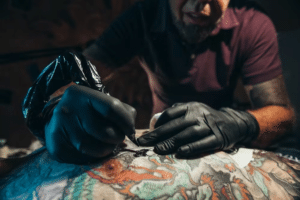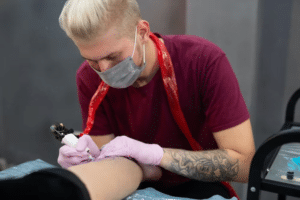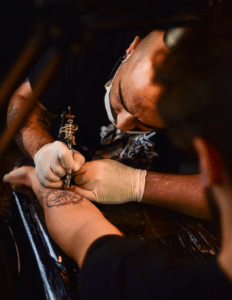From Zero To Prodigy - Becoming A Successful Tattoo Artist
Are you curious about the art of tattooing and want to learn how?

Tattooing is an incredible art form that has been around for centuries and offers individuals a chance to express themselves uniquely and personally. Learning how to do tattoos requires dedication, skill, and practice. Have you ever wondered what it takes to become a professional tattoo artist? This article will provide an overview of the steps to learn how to tattoo.
Choose Your Learning Platform
Firstly, think about what kind of learner you are. Do you prefer visual aids such as videos or images? Or do you learn better through text-based materials like books and articles? Knowing your preferred learning style will help narrow down the platforms that will work best for you. You should also consider the format of the course material offered by each platform. Some offer pre-recorded video lessons, while others provide live online classes.
One such learning platform designed specifically for those interested in tattoos is Tattoo Smart. It offers a range of tattooing techniques and design courses that experienced artists teach. For those who prefer traditional classroom-style learning, universities such as Falmouth University offer degree programs in graphic design and illustration focusing on tattoo art.
Consider cost, course content, and delivery format when choosing your learning platform. Online courses are more affordable than traditional university degrees but may lack the depth and rigour of academic coursework.
It’s All About Art
When getting a tattoo, many people focus solely on the design and placement rather than the artistic elements that go into it. But it’s important to remember that tattooing is an art form in itself, and understanding this can enhance your appreciation for the process.
Shading
When getting a tattoo, many people focus solely on the design and placement of their ink. However, it’s important not to forget that tattooing is an art form that requires skill and technique. One crucial aspect of creating a beautiful and long-lasting tattoo is shading. Shading adds depth, dimension, and realism to a design, making it come alive on the skin.
If you’re considering getting a tattoo or already have some ink but want to improve your knowledge, studying shading techniques is essential. There are various methods for achieving different types of shading in tattoos, including dotwork, whip shading, and black-and-grey techniques. Learning about these techniques will help you understand how they work and what effect they can achieve in your designs.
To study shading in tattoos, different research artists specialise in this area. Look at their portfolios online or visit local tattoo shops for inspiration.
Lining
A tattoo’s lines, colours, shading, and overall design require a skilful technique and a deep understanding of artistic principles.
To become a skilled tattoo artist, you must learn about lining techniques. The lining is one of the most fundamental aspects of tattooing because it creates the outline or structure on which the rest of the design will be built. Without proper lining skills, your tattoos may lack clarity or definition. To improve your lining technique, study various styles and techniques by watching tutorials or taking classes from experienced artists.
Understand Tattoo Styles
Learning all tattoo styles is an exciting and challenging journey for anyone interested in tattooing. First, it’s essential to understand that tattoos are a form of self-expression, and each style has unique characteristics. Tattoo artists must thoroughly know different tattoo styles to create designs that meet their clients’ needs.
One way to learn about tattoo styles is by studying them individually. Each style has techniques, design elements, and symbolism that make it distinct. For example, traditional tattoos are known for bright colours and bold outlines, while blackwork tattoos use only black ink and intricate patterns to create striking designs. Similarly, watercolour tattoos blend colours to create a painting-like effect on the skin.
Aside from studying individual styles, learning about the history of tattooing is also crucial in understanding how different styles evolved.
Understand The Skin
As a tattoo artist, learning about the skin is crucial to providing your clients with safe and professional services. Understanding the anatomy of the skin is essential in selecting the best placement for tattoos and determining how deep your ink will go. Before starting your journey as a tattoo artist, studying dermatology to learn about different skin types and their behaviour is advisable.
In addition to understanding the skin’s structure, you should know its healing process. A well-executed tattoo requires appropriate aftercare for optimal recovery. Tattoo artists must instruct their clients on proper care techniques, such as keeping the area clean and moisturised to prevent infections or scarring. Knowing how to take care of your client’s skin post-tattooing plays a significant role in maintaining good customer relationships.
Invest In The Right Equipment
Getting the right tattooing equipment is crucial to excelling in this field. As a beginner, choosing the best tools for your craft can be overwhelming. However, with some effort and time invested into learning and studying, you can make informed decisions when purchasing tattooing equipment.

First, you must learn about the different types of tattoo machines available. There are rotary machines, coil machines, and pneumatic machines. Each type of machine has advantages and disadvantages that you need to consider before making a final decision.
Second, study needles that work best for different types of tattoos. The type of needles used will vary depending on the design and placement of the tattoo. You must have an understanding of which needles to use for each situation.
Learning about these options will enable you to choose a machine that suits your style and expertise. Lastly, choosing high-quality inks is vital for creating vibrant tattoos that last long without fading or smudging. Studying ink pigments’ ingredients can help prevent allergic reactions and ensure safe use on clients.
Conclusion
In conclusion, learning how to tattoo is an enjoyable but challenging experience. It takes practice, creativity and the right equipment to create great tattoos. Remember that the most important part of becoming a tattoo artist is understanding the basics of safety and sanitation.
Make sure to review all of your options before making any decisions on where and how to learn. Additionally, it is helpful to look at other artists’ work for inspiration and guidance. Lastly, be patient with yourself as you continue your journey towards becoming a successful tattoo artist.
FAQs
How long will it take to learn?
The time it takes to learn something depends on a few factors, including the complexity of the material and the individual’s learning style. For example, if someone is trying to learn a new language, it could take months or even years to become fluent, depending on how much time they can dedicate to their studies. On the other hand, if someone is trying to learn a new skill, such as playing an instrument or coding, it could take weeks to months, depending on how much practice they put in. Ultimately, everyone learns differently, so there is no one-size-fits-all answer regarding how long it will take for someone to learn something.
How much does it cost to learn?
The cost of learning depends on various factors, including the type of learning you’re pursuing and the resources available. For example, many free online resources can help you start if you want to learn a new language. However, the cost may be higher if you seek more comprehensive instruction, such as classes or tutoring. Similarly, if you’re looking to pursue a degree or certification in a specific field, tuition costs will vary depending on the institution and program.
Are there any apps to help me learn how to tattoo and practice?
Several apps are available to help you learn how to tattoo and practice. The Tattoo Pro app is a great way to get started, including step-by-step tutorials on creating tattoos. Another helpful app is Inkbox Tattoo Studio, which provides detailed videos on the basics of tattooing, including shading techniques and needle depth control. Finally, with Ink Hunter, you can upload your images or browse hundreds of existing designs and virtually “try them on” using your phone’s camera.




